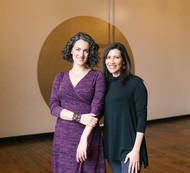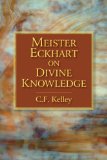Yoga Comes Of Age
Hatha yoga is an excellent health practice but if we want to avoid injury we need to do it differently as we begin to age. Sage Rountree and Alexandra Desiato’s forthcoming book, Lifelong Yoga, is an excellent manual on how we should adapt our yoga routine once we cross 50.
by Sherri Betz
As a professional therapist and teacher who strives to give accurate and accessible instructions to my clients, I was very pleasantly surprised by the quality of the writing and the presentation of exercises in Sage Rountree and Alexandra Desiato’s book Lifelong Yoga: Maximizing Your Balance, Flexibility, and Core Strength in Your 50s, 60s, and Beyond (due out from North Atlantic Books on August 1). The gentle introduction and light emphasis on yogic philosophy and principles seems just right to introduce older adults to the wonderful benefits of a yoga practice. As a board certified geriatric physical therapist and Pilates teacher who specializes in working with older adults, I am pleased to have a book I can recommend to my clients.
Quite appropriately, the primary focus of Lifelong Yoga is on breathing, core control, proper alignment, and the safe selection of poses for older adults. This is an area where improper selection of poses can be very costly. I was particularly impressed by the way many of the poses are photographed, described and demonstrated. It is very easy to miss the small but essential detail. In that regard, the authors are definitely on their game. For example, the Warrior 1 pose is depicted in a short stride so that the back foot is not in excessive pronation (or collapse of the arch). Likewise, the seated sidebend is depicted with a safe amount of spinal movement and with the emphasis on lengthening of the spine versus going to full endrange. (Stretching the spine to endrange can cause excessive compression of the spine segments and can result in vertebral fractures, disc bulges or ligament sprains.) The authors have obviously kept these points in mind when photographing the poses. As a result, their examples are beautifully aligned and accessible to the average person.
Rountree and Desiato have included excellent, effective and safe poses for balance. These are essential for the age group they are addressing. They also are paying appropriate attention to some of the strength training needs of older students of yoga. They describe full squats with or without support from a yoga block in their recommendations (however, I would like to see some way of assisting the person into the full squat such as holding onto doorknobs or a rope from above for those who are challenged by strength or flexibility). They also recommend good poses for lower extremity strength and the all important hip extension mobility such as low lunge/runner’s lunge.
This may sound odd, but as someone who has seen the problems that can easily arise when older adults attempt to bend and stretch themselves into postures that gave them no trouble in their 20s and 30s, I was even more impressed by the poses that were NOT selected for the book! I wholeheartedly agree with the authors’ decision to OMIT the ever popular Forward Folds, Shoulder Stand and Plough, as well as the deep spinal twists such as Revolved Triangle and the full Eagle pose. Both can very easily stress knee and shoulder ligaments.
The chapter on age-related changes was brief but the descriptions of common pathologies that older adults experience was correct. The “Tips for your yoga practice” were excellent and spot on for each health challenge. Since 1 out of every 2 women and 1 out of every 4 men over age 50 have low bone density, I think that this chapter could be expanded with more details on contraindicated movements, especially for people with osteoporosis. The very last paragraph of chapter 9 on page 204 recommends avoiding forward folds altogether for those with bone density concerns. I would love to see this statement highlighted in the paragraph discussing osteoporosis in chapter 2, page 30. I would also love to see more evidence or citations of clinical trials that support the author’s excellent recommendations. While they reference editorials or expert opinion pieces that are nice to read, they don’t really provide the hard scientific evidence showing the benefits of yoga for common pathologies.
The Core Strength chapter is innovative. It provides correct descriptions of neutral pelvis and core/abdominal wall engagement, with a good selection of movements and poses. The spinal articulation poses and movements such as the Lean Back, Bent Knee Rolldown, Sphinx (much like Single Leg Kick), Seal (Swan), and Swimming to be highly influenced by Pilates. I think there should be some acknowledgement or reference to Pilates since none of these are “pure” yoga asanas.
The authors show impressive sensitivity to the special requirements of older adults who attend yoga classes. They recommend sensitive placement of hearing impaired adults, allowing students who so wish to wear shoes in class, and giving students the option for “no touching” manual corrections. The authors make it clear that being a yoga teacher doesn’t automatically make that person an expert in their student’s health-related condition, which should come as both a relief to teachers and a gentle warning to students. I appreciated their reminder to students that they are ultimately in control of their own body and thereby should feel free to “go rogue” in a class if a pose is not right for them.
The authors wisely dedicate a whole chapter to fall prevention. This is a big deal and really needs to become well known because it is such a critical issue for aging adults and is easily and readily addressed in yoga more than any other form of exercise. (The title of the chapter contains the word Fallproof and unbeknownst to them, Fallproof is actually the name of a fantastic program and book developed by Debbie Rose, PhD at Cal State Fullerton).
Overall, I am highly impressed with this book and would not hesitate to recommend it to any of my clients. I would even consider recommending it as required reading for our National Osteoporosis Foundation/American Bone Health “Bone Health Specialist” Teacher Training program, especially if the authors were to expand special health-related conditions chapter to include more information for osteoporosis as well as a bone safe yoga sequence such as the American Bone Health “Bone-Safe Yoga Sequence.”
Photograph courtesy of Tammy Lamoureaux.
Sherri Betz (PT, GCS, CEEAA, PMA®-CPT) is a 1991 graduate of the Louisiana State University Medical Center’s School of Physical Therapy. She began her career as a national gymnastics competitor and as a group fitness instructor and personal trainer for Nautilus Fitness Centers in the 1980’s. In addition to being a physical therapist for professional sports teams and elite athletes, she has emerged as one of the leading educators in the Pilates movement, specializing in addressing geriatric issues such as osteoporosis.










